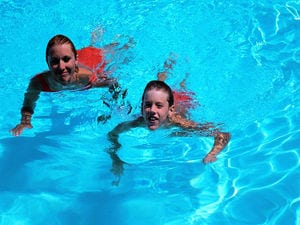
FRIDAY, June 1, 2018 (HealthDay News) — Before you take a dip in the pool this summer, be sure there’s not too much chlorine in the water.
Over the past 10 years, more than 500 people in California have been exposed and sickened by too much chlorine while swimming, according to the California Department of Pesticide Regulation (DPR).
More than half of those affected were at public pools, and about 66 percent of the incidents weren’t caused by faulty equipment.
“Whether you are a homeowner with a pool or you run a public water park or community pool, you must follow all of the manufacturer’s instructions and not exceed the amount of chlorine specified,” said Brian Leahy, director of the DPR.
“The directions for use on the label are both state and federally approved to ensure safety. The ‘label is the law’ when it comes to disinfectants, and its directions for use must be followed,” he said in a department news release.
Chlorine, either solid or liquid, is a pesticide used in pools to destroy germs, including those from feces, urine, saliva and other substances.
But excessive exposure to chlorine can cause sickness and injuries, including rashes, coughing, nose or throat pain, eye irritation and bouts of asthma, health experts warn.
Instructions for safely chlorinating a pool usually call for a maximum of four parts per million when people are in the pool. This level is more than enough to disinfect pools, according to the news release. Using higher concentrations may sicken swimmers.
In addition, those running public pools should ensure that automatic chlorination equipment is well maintained and operating according to the manufacturer’s specifications. Employees should be trained to operate the equipment and be prepared to deal with malfunctions.
Moreover, safe handling of chemicals is as important as avoiding excess chlorination. Keys to handling chemicals safely include:
- Disposing of pool chemicals and their packaging according to label directions.
- Storing chemicals according to label instructions.
- Keeping all chemicals out of the reach of children.
- Showering before and after getting into a pool to prevent skin reactions from chlorine.
More information
For more on healthy swimming, visit the U.S. Centers for Disease Control and Prevention.
